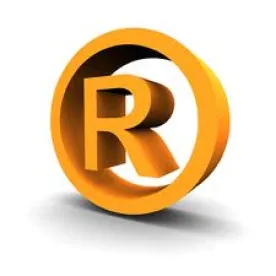Trademark types frequently encounter brand owners and managers with substantial misunderstanding and confusion about when use of the federal registration notice symbol is lawful. Most of the time a misuse or technical violation results from an honest mistake, but sometimes the misuse is, and starts out intentional, or perhaps the misuse begins to look intentional if it isn't promptly fixed or corrected upon learning of the misuse.
Section 906 of the U.S. Patent and Trademark Office's Trademark Manual of Examining Procedure (TMEP) answers some of the most common questions regarding misuse with this guidance:
-
The federal registration symbol should be used only on or in connection with the goods or services that are listed in the federal registration.
-
The federal registration symbol may not be used with marks that are not actually registered in the USPTO.
-
Even if an application is pending, the federal registration symbol may not be used until the mark is registered.
-
Registration in a state of the United States does not entitle a person to use the federal registration notice.
-
A party may use terms such as “trademark,” “trademark applied for,” “TM” and “SM” regardless of whether a mark is registered. These are not official or statutory symbols of federal registration.
This information and guidance, however, begs the question of whether misuse is a serious violation and the possible consequences of misusing the registration symbol? As you may recall, we've talked a bit before about possible false advertising claims against the trademark owner who misuses the symbol and a possible unclean hands defense in favor of the trademark owner's enforcement target, especially when the misuse is accompanied by a bad faith intent to deceive.
As it turns out, we really need to add another important potential consequence to the list, one that I fear will be abused and used for pure tactical advantage in trademark enforcement efforts, namely, assertions of trademark fraud, despite the current heightened standard of fraud, with the Court of Appeals for the Federal Circuit now requiring a specific intent to deceive the Trademark Office. Actually, registration symbol misuse is not really a new ground of trademark fraud, but it has been rather uncommonly and infrequently alleged, at least in recent years.
One of the reasons for my concern of abuse stems from a recent TTAB decision permitting this rather conclusory and bare bones trademark fraud claim to survive a motion to dismiss:
Applicant knowingly and willfully used the ® symbol in connection with the term … in an attempt to deceive or mislead consumers or others in the trade into believing that the mark was registered.
A pdf of the TTAB's decision with scant analysis -- from about six weeks ago -- in North Atlantic Operating Co., Inc. et al v. DRL Enterprises, Inc. Opposition No. 91158276), is linked here.
Relying only on the above-quoted allegation, the TTAB decided: "We find that the allegation set forth above includes the necessary pleading of intent, and specifies that applicant’s misuse was knowing and willful, and an attempt to deceive or mislead consumers."
In contrast to most trademark fraud cases where various false and misleading statements -- relied upon by the Trademark Office -- are the focus of the fraud challenge, in North Atlantic Operating Co., the focus was on an alleged intent to deceive the public, as opposed to the USPTO.
The Federal Circuit has held: "The improper use of a registration notice in connection with an unregistered mark, if done with intent to deceive the purchasing public or others in the trade into believing that the mark is registered, is a ground for denying the registration of an otherwise registrable mark." Copelands' Enterprises Inc. v. CNV Inc., 945 F.2d 1563, 20 USPQ2d 1295 (Fed. Cir. 1991). Presumably, the same conduct would sustain a petition to cancel as well. Although, the statutory support for the broader focus is unclear, it appears that an intent to deceive the USPTO is not required, so long as there is an intent to deceive the relevant public regarding registration.
Another reason for my concern stems from the apparently satisfactory yet conclusory fraud allegation. There are simply no details regarding the who, what, where, why, and when, of the alleged trademark fraud, and this failure appears to contradict recent TTAB case law confirming that fraud must be pled with particularity under Fed. R. Civ. P. 9(b). Indeed, our friend John Welch over at the TTABlog has reported multiple times on the TTAB tightening up the pleading requirements for trademark fraud claims, following the Federal Circuit's landmark decision in In re Bose, here, here, and here.
Finally, the Federal Circuit's Copelands' Enterprises decision makes clear that how quickly a trademark owner corrects a misuse of the registration notice symbol after learning of the misuse, will impact the determination of whether the trademark owner is charged with an intention to deceive the public. If we couple that guidance with the current uncertainty of whether the requisite intent may be established with a reckless disregard for the truth, trademark types and the brand owners and managers they represent, are all well-advised to pay more attention to what many previously have written off as honest mistakes and technical violations with no real or significant consequences.
Only time will tell whether the registration notice symbol misuse type of trademark fraud claim will remain uncommon or gain traction in our Post-Bose world.



 />i
/>i

